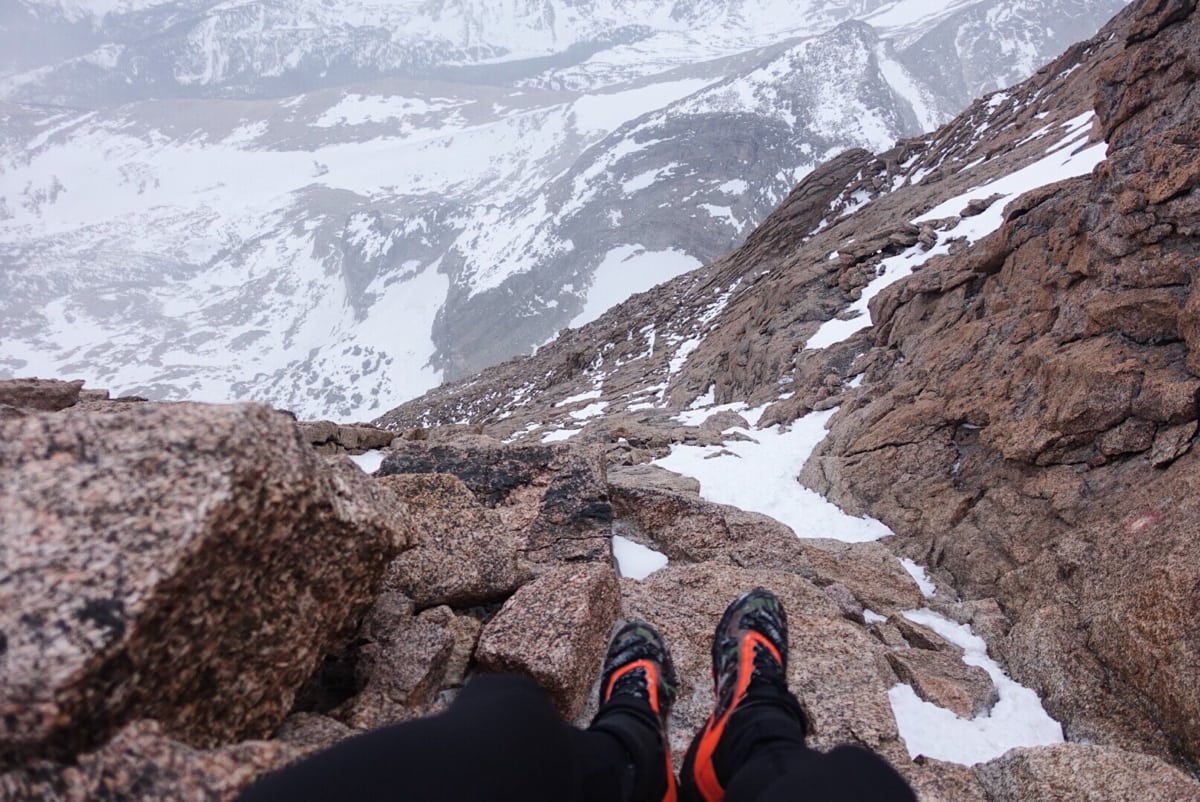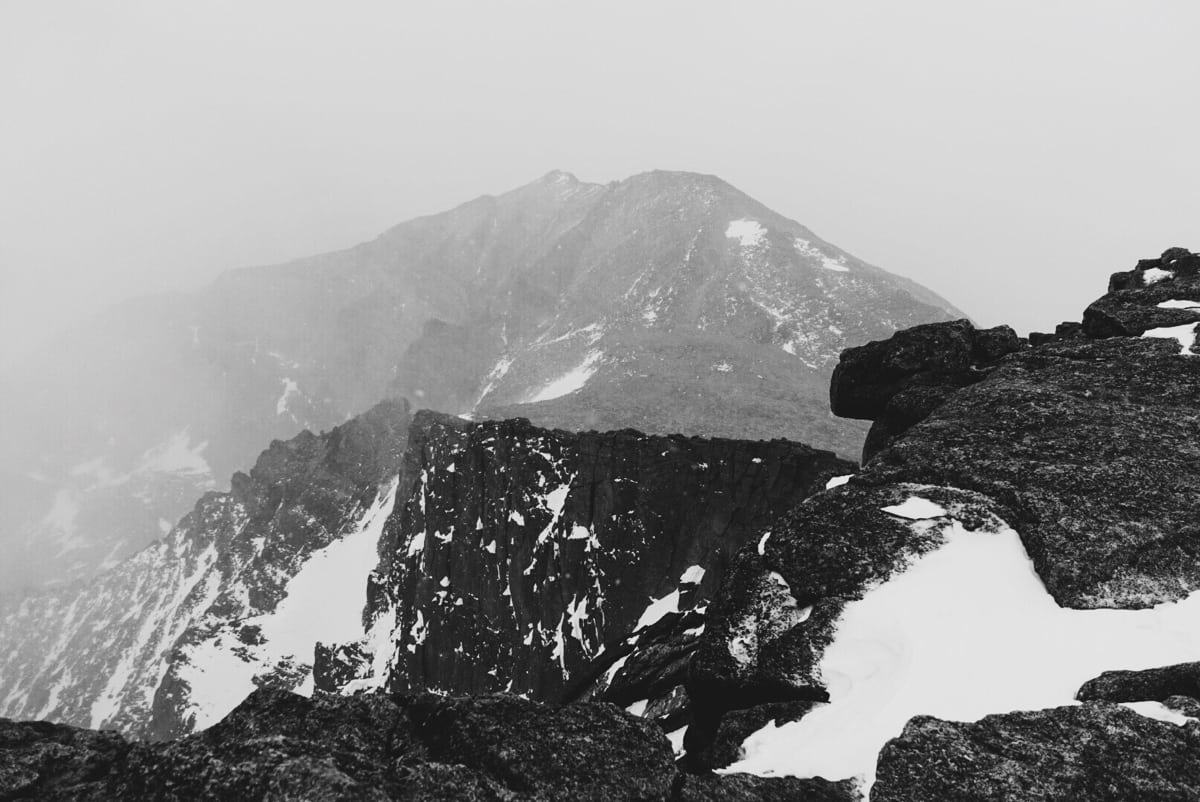A couple of days prior to the March Equinox, I set off from the Longs Peak trailhead around mid-morning, hoping to summit the mountain before the official end of winter. The weather is exceptionally mild for the season, and other than the calendar stating it as such, you would have have a hard time believing it is still winter.
Jogging up through the woods, the snow is mushy, making it hard to find a good rhythm. Every so often I punch through the packed surface up to my knees, leaning heavily on my poles so as to not fall over. I roll up my tights, and am down to a t-shirt under my windbreaker, yet still sweating profusely.
My intended route for the day is to go up the Loft and down the Keyhole. I figured that given the conditions, I could get away with little more than my standard running gear, save a pair of hiking crampons and a back-up puffy jacket.
Just before treeline, I pass a woman who asks me how far I am going. I reply that I am hoping to make it to the summit. She stares blankly in return and says nothing. I interpret her silence as a sign of disapproval, but maybe she is simply concerned for my safety. Appearances would suggest that I am underprepared and overly confident carrying such a minimal amount of gear.
The truth is that I have no qualms turning back if needed. I travel light to move fast and if conditions are not optimal then I can quickly retreat. Her reaction is still a good reminder to stay humble and not be complacent as this mountain always commands respect.
I reach the base of the Loft and don my crampons. The terrain steepens, the snow is now hard with intermittent patches of ice. I follow a bootpack which makes my upward progress much easier not having to kick steps. Two climbers are descending cautiously up ahead. I greet them, but they do not say much. They look exhausted and it is still a long way back to the car.
A short while later, I run into Bill Wright and his son Derek on Keplinger’s Couloir. They are jovial, excited to have summited, and we chat for a good 10 minutes.
Conditions to the the top are better than expected and strikingly less icy than late last August when I finished the Tour de 14ers. I sit on the summit, alone, deeply savoring the moment and give thanks to the mountain for allowing my safe passage.
On the way down, at the base of the Homestretch, I run into a couple who inform me that the Keyhole route is mostly clear of snow. This is a welcome bit of information, knowing that I will be able to run all the way back to the trailhead–a pleasant way to end an already great outing.
Later that evening, I get a call from Bill.
“Did you happen to see those two climbers coming down the Loft?” he asks. I reply that I did and that they looked tired and were moving slowly.
“Well, they started at 2 a.m. with another climber who is now missing, so I’m wondering if you have any recollection of seeing anyone on the rest of the route?”
Other than the couple below the Homestretch, I had only seen one person in the boulder field on the other side of the mountain. I try to recall what he was wearing; an orange, maybe a green puffy? It is frustrating how bad memory can be in these situations.
There is no further news until the following evening, when a report informs us that his body has been retrieved by helicopter. I did not know the climber, and at the time of this writing, I do not know how he died, but I feel a connection to his passing.
A mix of emotions swirl inside of me. It is strange to think of how I was out enjoying my day, while in the exact same context a tragedy was simultaneously unfolding.
There is nothing that I could really have done to prevent this from happening, but when faced with this raw, hard, reality, it is difficult to make sense of our attraction to these environments.
With that on my mind and a heavy heart, I decide to head back up the mountain two days later, on the first day of spring. This may seem counterintuitive, but I feel a strong need to process in context. The weather is much more turbulent on this day, with strong winds and snow flurries. I am filled with doubt and question my motives. Am I just being selfish and stupid?
I think back to the woman who judged me with her stare. I understand her concern. I know my wife worries every time I head into the mountains. I struggle to reconcile my draw to this environment with her apprehension. But why we head to the mountains is an impossible question to answer since the reasons touch on so many aspects of our existence from physical, to mental, emotional, and spiritual. The mountains give and take, indifferent to our feelings, our triumphs and our failures. Perhaps it is precisely this indifference that forces out our humanity that makes the mountains so compelling.
Call for Comments (from Meghan)
- Do you have answers to the hard questions about why we do what we do when it involves risk and concern from our loved ones?
- Does being in wild places help you sort out the conflicting emotions of being there in the first place?



